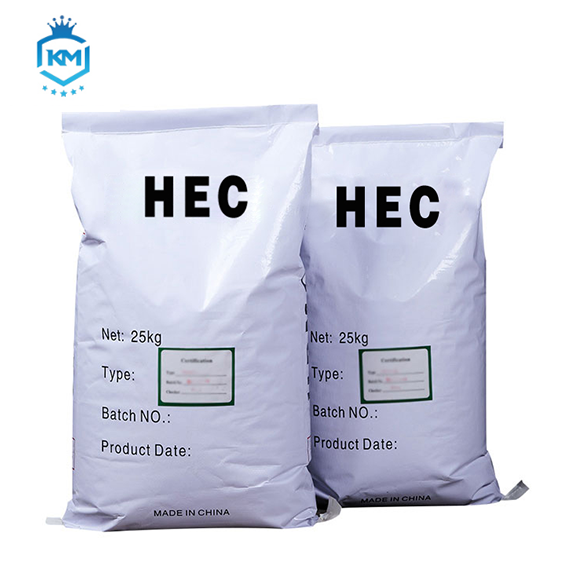Hydroxyethyl cellulose (HEC) is a widely used polymer in various industries, primarily as a thickener. Its unique properties make it suitable for a multitude of applications, ranging from personal care products to pharmaceuticals and construction materials. This paper aims to provide a comprehensive review of the properties, synthesis methods, applications, and recent advancements of HEC as a thickener. Various factors affecting the thickening efficiency of HEC, such as molecular weight, substitution degree, and solution conditions, are discussed. Furthermore, the paper highlights the importance of HEC in enhancing product stability, viscosity control, and overall performance in different formulations. Recent research trends and future prospects for HEC-based thickening systems are also explored, shedding light on potential innovations and areas for further investigation.
Keywords: Hydroxyethyl cellulose, Thickener, Polymer, Properties, Applications
- Introduction Hydroxyethyl cellulose (HEC) is a water-soluble polymer derived from cellulose, a natural polymer abundantly found in plants. Due to its excellent thickening properties and biocompatibility, HEC has gained significant attention in various industrial sectors, including cosmetics, pharmaceuticals, paints, and food. As a hydrophilic polymer, HEC exhibits high compatibility with aqueous systems, making it an ideal thickening agent for water-based formulations. Moreover, its non-ionic nature imparts stability and versatility to HEC-based products, rendering them suitable for a wide range of applications.
- Properties of Hydroxyethyl Cellulose HEC possesses several key properties that make it an effective thickener:
2.1. Water Solubility: HEC is readily soluble in water, forming clear and viscous solutions at low concentrations. This property allows for easy incorporation into aqueous formulations without the need for complex solubilization techniques.
2.2. Rheological Control: The viscosity of HEC solutions can be easily adjusted by varying parameters such as polymer concentration, molecular weight, and shear rate. This enables precise control over the flow properties of HEC-based formulations, making it suitable for both high-viscosity gels and low-viscosity solutions.
2.3. pH Stability: HEC exhibits good stability over a wide pH range, from acidic to alkaline conditions. This versatility makes it compatible with a diverse range of formulation systems, including those requiring pH adjustment.
2.4. Thermal Stability: HEC is thermally stable up to certain temperatures, allowing for processing and storage under various conditions without significant degradation. However, excessive heat can lead to irreversible changes in the polymer structure and loss of thickening efficiency.
- Synthesis of Hydroxyethyl Cellulose HEC is typically synthesized through the etherification of cellulose with ethylene oxide, resulting in the introduction of hydroxyethyl groups onto the cellulose backbone. The degree of substitution (DS) of hydroxyethyl groups can be controlled by adjusting reaction conditions such as temperature, reaction time, and reactant ratios. Higher DS values lead to increased water solubility and thickening efficiency of HEC, whereas lower DS values may result in improved compatibility with organic solvents.
- Applications of Hydroxyethyl Cellulose as a Thickener HEC finds widespread use as a thickening agent in various industries, including:
4.1. Personal Care Products: HEC is commonly employed in cosmetics, shampoos, lotions, and creams to impart viscosity, improve texture, and enhance product stability. Its non-ionic nature and biocompatibility make it suitable for use in skin and hair care formulations.
4.2. Pharmaceuticals: In pharmaceutical formulations, HEC serves as a thickening agent in oral suspensions, topical gels, and ophthalmic solutions. Its inertness, safety, and rheological properties contribute to the stability and efficacy of drug delivery systems.
4.3. Paints and Coatings: HEC is used in water-based paints, adhesives, and coatings to control viscosity, prevent sagging, and improve film formation. Its shear-thinning behavior and pseudoplasticity enhance the application properties and appearance of paint formulations.
4.4. Construction Materials: HEC is incorporated into cementitious mortars, grouts, and tile adhesives to enhance workability, water retention, and adhesion. Its thickening and binding properties improve the rheological behavior and mechanical strength of construction materials.
- Factors Affecting the Thickening Efficiency of Hydroxyethyl Cellulose The thickening efficiency of HEC is influenced by various factors, including:
5.1. Molecular Weight: Higher molecular weight HEC polymers generally exhibit greater thickening efficiency due to increased chain entanglement and solution viscosity.
5.2. Degree of Substitution: The DS of hydroxyethyl groups on the cellulose backbone significantly impacts the solubility and thickening properties of HEC. Higher DS values result in improved water solubility and thickening efficiency.
5.3. Solution Conditions: Factors such as pH, temperature, electrolyte concentration, and shear rate can affect the rheological behavior of HEC solutions. Optimal thickening performance is achieved under conditions where polymer hydration and chain entanglement are maximized.
- Recent Advancements and Future Prospects Recent research efforts have focused on exploring novel synthesis routes, modifying HEC properties, and developing tailored thickening systems for specific applications. Advances in nanotechnology, polymer chemistry, and formulation science hold promise for enhancing the performance and versatility of HEC-based thickening agents. Future research directions may include the development of sustainable and eco-friendly alternatives to conventional thickeners, as well as the integration of HEC into emerging technologies such as 3D printing and advanced drug delivery systems.
- Conclusion Hydroxyethyl cellulose (HEC) is a versatile polymer with a wide range of applications as a thickening agent. Its unique combination of properties, including water solubility, rheological control, and biocompatibility, make it indispensable in various industries. Through a comprehensive understanding of its properties, synthesis methods, applications, and influencing factors, the potential of HEC as a thickener can be maximized to meet the evolving needs of modern formulations. Further research and innovation in HEC-based thickening systems are essential for addressing current challenges and unlocking new opportunities in diverse fields.


